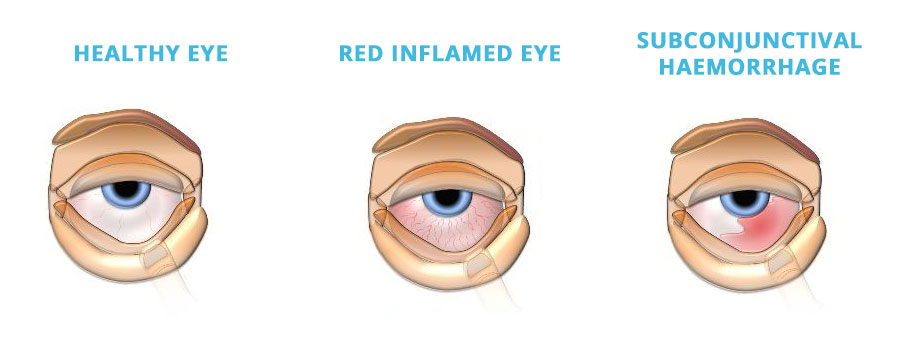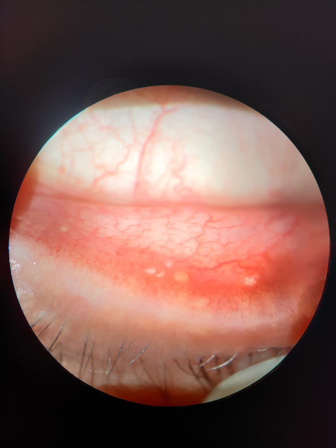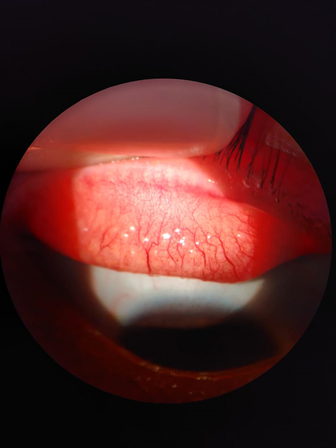Eye Checkup
 Image description
Image description
1. Why do we get spectacle powers?
In younger age groups, spectacle powers most likely develop due to the
inherent shape or length of the eye. Shorter eyes tend to develop plus powers
(Hyperopia) and longer eyes tend to have minus powers (Myopia).
2. Does excessively watching T.V. or Laptop/iPad usage cause spectacle
power to
increase?
No. A common complaint that parents give us at the clinic is that the child
constantly watches T.V. from close by and hence has got glasses now. On the contrary,
the fact that the child needs to go very close to the T.V. may be an indicator that his
vision isn’t up to the mark, and hence should be a warning sign that this child needs an
eye check-up. Usually, excessive use of such devices may produce eye strain, but never
produces a change in spectacle powers.
3. What can we do to stop the number from increasing?
There is no evidence to prove that any eye exercises nor any dietary changes
will produce reduction or stop progression of spectacle power changes. Spectacle power
of an individual’s eye is like the height of that person- after a certain age it will
stabilize (usually around 18-21years of age). Rarely there are pathological disorders in
which the eye number constantly changes. These are serious conditions requiring detailed
tests and appropriate treatment.
4. I wear my glasses regularly, but why has my number still increased?
As mentioned above, wearing your glasses does not mean your eye will not
change. Often number changes can be noticed when the teenager suddenly has an increase
in height.
5. I was able to see everything so far, but now that I am over 40years of
age, why do I
require glasses for reading?
Presbyopia is the natural process of ageing of the eye, which has its onset
around 40years of age. It causes the inherent power of the eye muscles to weaken, thus
producing a reading glass power. This number gradually increases upto the age of 60
years.
6. Do I have to wear my glasses all the time?
It is imperative for children to use their glasses at all times. Not doing so
may cause one or both eyes to become lazy, i.e. lose the capacity to have full visual
potential. Once the eye becomes lazy, even full glasses power prescription will not help
the person in gaining their normal vision back.
7. I can see everything, why do I need an eye check-up?
Often, what you may think is normal vision may be less than the required
standard of vision. This can only be detected by a detailed eye check up by your Doctor.
Even for people with normal vision, annual eye check-ups are imperative to detect any
silent diseases in the eye e.g. Glaucoma, Retinopathy.
Eye Infection
 Image description
Image description
1. What is a stye?
A stye is a common eye infection of the hair on the lashes of the lids. It can
be treated with appropriate drops/ointments and occasionally oral medications may be
required. Recurrent styes maybe a sign of undetected underlying diseases like Diabetes
Mellitus.
2. Why has my stye has not gone for the past few months?
A persistent and yet non-painful swelling on the eyelid is called a “Chalazion”.
These are often mistaken for a stye. This kind of eye infection is a sign of chronic
inflammation and can be treated medically. If no improvement occurs, then rarely they
maybe required to be incised and the accumulated material can be removed by a simple and
short surgical procedure.
3. My eye is red, why can’t I just take a medicine from the pharmacy?
Red eyes may not always imply an eye infection. They may also be a sign of
allergies and immune reactions in the eye. Even conditions like raised eye pressure may
present with redness and pain in the eye. The treatment of each of these conditions
differs drastically, and so a red eye always requires an eye check up by a Doctor.
4. I have conjunctivitis, but why is my vision now blurred?
Often, red eyes are self – diagnosed by people as Conjunctivitis. Typically,
infective conjunctivitis is an infection of the thin layer covering the white portion of
the eye. It is accompanied by watering and/or yellowish discharge from the eyes.
Occasionally, a viral Conjunctivitis may also involve the cornea of the eye. This is
called Keratoconjunctivitis. In this eye infection, vision also may get blurred, and may
take few days to weeks to completely clear even after the redness settles.
Any eye infection treatment first requires a complete eye check up.
Dr. Kareeshma Wadia routinely performs all these procedures. Speak to her for more
details on what is the best option for you.
Eye Allergies
 Allergy of the eyes presents with congestion and bumpy eruptions on
the inner surface of upper and lower lids
Allergy of the eyes presents with congestion and bumpy eruptions on
the inner surface of upper and lower lids
 Allergy of the eyes presents with congestion and bumpy eruptions on
the inner surface of upper and lower lids
Allergy of the eyes presents with congestion and bumpy eruptions on
the inner surface of upper and lower lids
1. I took treatment for my red eyes but the drops didn’t work and it keeps
coming back
every 4-5 months
Red eyes don’t always mean eye infection. They may also be a part of Allergic
Conjunctivitis. Mild cases can be treated with short course of drops, but typically eye
allergies are recurrent in nature.
They can flare up with increase in dust exposure/ change in weather/ known
atopy/ associated skin rashes/ associated asthma. Your doctor may prescribe you certain
medications for immediate relief, but you may occasionally need some medications to
continue long term on a regular basis to keep the eye allergy in check.
This does not mean that the medications are not working. Each condition has its
own natural course, and medication differs from person to person. DO NOT self medicate,
as eye allergy treatment may often require a short course of steroid eye drops. When
used under supervision they are very safe. It is self medication and abuse of these
drops that create complications.
2. I keep having eye allergy and now my vision is blurred
Eye allergy is often associated with increased rubbing of the eyes. This can
produce a thinning and weakness of the cornea of the eye. This condition is called
Keratoconus. It often co-exists with eye allergy. See your Doctor immediately to address
this issue.
Dry Eye
Dry Eye is a very common symptom of a large number of patients of the current
generation.
It is caused by multiple factors, the commonest being the increasing use of digital
devices e.g. mobile phones, computers, tablets etc.
 Image description
Image description
1. How do I know if I have dry eyes?
The symptoms vary from patient to patient. Often, patients actually feel the
dryness of the eyes. Some people complain of pricking sensation, irritation, watering,
burning, dull pain or dragging pull on the eyes, and heaviness.
2. My eyes are watering but my eye specialist says I have dry eyes.
Often when your eyes are dry, they reflexly produce watering as a defence
mechanism.
Occasionally patients may complain of whitish discharge/ clumpy discharge accumulated at
the corners of the eye. This is the mucous being produced by the eye in response to
dryness.
Sometimes dry eyes is accompanied by allergy in the eyes. Such people also may have
watery eyes.
3. What do tears contain?
The tear film is made up of 2 main layers- 1 is the watery layer, which actually
consists of predominantly water content mixed with electrolytes and other defence
proteins, and lies in contact with the front surface of the eye. This water content is
produced by the tear glands of the eye called Lacrimal glands. And over that is a layer
of oil which is produced by oil glands of the eyelids called Meibomian Glands. These
glands produce oily secretions which prevent the evaporation of the water content of the
tears.
4. How does Dry eye occur?
Based on what layer is involved, there are 2 main types of dry eyes.
One in which there is actually a reduction in the production of tears. This reduction in
tear production is caused by damage to the lacrimal gland that produces tears. This can
occur in increased age, the effect of some drugs e.g. post-chemotherapy or after
radiation therapy, and most commonly is associated with Autoimmune disorders like
Rheumatoid Arthritis.
The second type is called Evaporative Dry Eye. This has a normal production of tears,
but quick evaporation because of the inadequate oily layer. This is caused because of
damage to Meibomian Glands. This is the COMMONEST type of dry eye. The Meibomian Glands
can get stressed due to exposure to environmental dust and pollution, or getting
infected or their opening on the lids getting blocked.
5. Can dry eyes be treated?
Yes, it can be treated, but the response depends on what type of eye dryness you
have and how severe it is.
If you have dryness due to reduced tear production, this usually requires long term or
permanent treatment in the form of eye drops.
If you have infected or stressed oil glands, they can be treated with warm compresses
and antibiotic
ointment to treat the infected lid glands. Just a short term treatment for this may
produce a significant improvement.